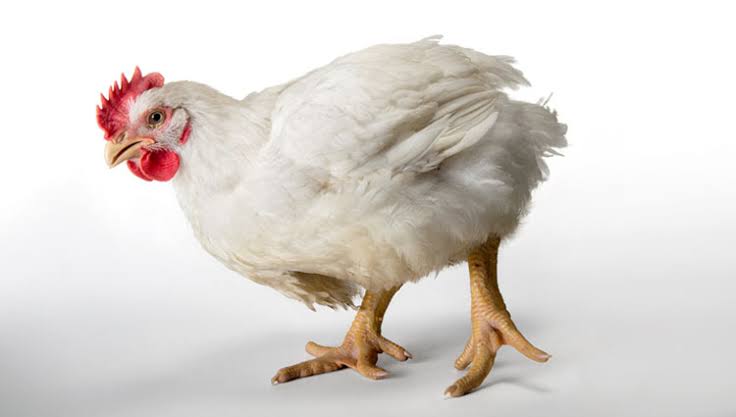Animal Husbandry And Veterinary Science Notes On – Feed For Broiler – For W.B.C.S. Examination.
Animal Husbandry & Veterinary Science is highly scoring optional subject in W.B.C.S. Mains exam. The aspirants from the academic background in Animal Husbandry & Veterinary Science, Botany, Zoology and allied field can opt this as their optional for W.B.C.S. Mains exam. It will be difficult to any aspirants does not have a prior knowledge of Animal Husbandry & Veterinary Science or Zoology.Every year the marketing age of broilers decreases by an average of 0.75 days for the same performance. This trend is likely to continue in the same direction for the coming years. Nutrition plays a vital role in enabling this improvement. As the feed cost represents an expensive input (~70-80% of broiler production cost), the poultry producer should be aware of the dynamics of the feed in its influence on final product quantity and quality.Continue Reading Animal Husbandry And Veterinary Science Notes On – Feed For Broiler – For W.B.C.S. Examination.
Formulating feed ideally requires in-depth knowledge of several parameters such as the energy level to be maintained in the diet, balancing the amino acid profile and electrolytes of feed etc., which, otherwise, if not properly monitored, could negatively influence the performance and profitability of the business.
Further, in light of environmental challenges and disease outbreaks, it is even more challenging to extract the total genetic capability of the birds.
Nutritionists should look at several critical parameters whilst formulating broiler feed. Important amongst these are:
1. Nutritive value of raw materials
2. Amino acid digestibility
3. Amino acid and calorie ratio
4. Selection of suitable fat source
5. Calcium requirement of birds
6. Electrolyte balancing
7. Immuno-modulation
8. Summer management
1. Nutritive value of raw materials
Raw materials are purchased based on price, availability and nutritive value. Nutritive value of raw materials varies from time-to-time, source-to-source and batch-to- batch.
It is a very important task to assess the nutritive value each time to ensure that the feed being manufactured is of desired quality.
It is essential to have preset quality parameters for each and every raw material, based on which purchase of raw material should be made.
Upon purchase of raw material it needs to be analysed for quality parameters after collecting a representative sample. The ideal quality parameters for some key raw materials are as mentioned.
Soya de-oiled cake
·Bulk Density: 570-640 g/1000 cc
·Desired Physical Properties
– Colour – Light tan to light brown
– Odour – Fresh, not musty, not sour or burned
– Texture – Homogeneous, free flowing, no lumps or cakes, without coarse particles or dusty
·Urease activity: 0.05-0.20-pH unit change
·Moisture (max): 12%
·Protein solubility (0.2% KOH): 73-85%
·Protein Dispersibility Index: 15-30%
·Contaminants: Particularly check for urea, non-protein nitrogen and/or ammonia
·Crude Protein (min.): 44.0%
·Fiber (max.): 7.0%
·Ash (max.): 6.0%
·Silica (max.): 1.0%
·ME (kcal/kg): ~ 2,375
Fish / Fish meal
·Moisture (max.): 10.0%
·Sand and silica (max.): 5.0%
·Salt (max.): 3.0%
·Urea: Nil
·Check for Decomposition / Rancidity
·Contamination with leather meal
·Bacterial load
·Crude Protein (varies depending on the variety of the fish)
·Ether extract (varies depending on the variety of the fish)
Maize
·Moisture (max.): 12.0%
·Check for Aflatoxins
·Thiram
·Grain size
2. Amino acid digestibility
In general, an average of 90% digestibility is considered whilst formulating feeds or feed formulations are based on total amino acids only. Since the raw materials vary in digestibility, it is necessary to consider digestible amino acids whilst formulating the feed to ensure optimum performance.
From Table 1, it is clear that formulations based on digestible amino acids will deliver better results as in many cases the actual digestibility is much lower than the assumed level of 90%.
Further, feed formulations made by using digestible amino acids will economise feed cost for equal performance.
3. Amino acid and calorie ratio
Environmental temperature and the energy content of the feed are key determinants for the feed intake of the bird. Other nutrients are normally adjusted based on the feed intake of the bird. There exists a relationship between energy and digestible amino acids, which if maintained, will enable adjustment of crude protein levels in the diet, thereby reducing the feed cost without compromising performance.
Optimum live performance, maximum protein retention and reduced carcass fat content can only be obtained if a proper ratio between energy and digestible amino acids is maintained. However these ratios vary between different growing periods, i.e. Starter, Grower and Finisher.
Please subscribe here to get all future updates on this post/page/category/website


 Toll Free 1800 572 9282
Toll Free 1800 572 9282  mailus@wbcsmadeeasy.in
mailus@wbcsmadeeasy.in



















































































































